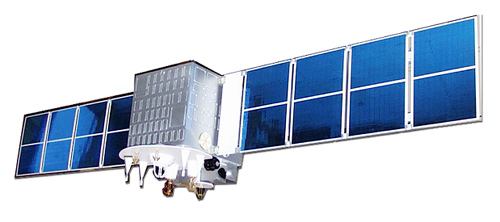FY-1 Series
Introduction
China started to develop its polar-orbiting meteorological satellites in the 1960s. The late Chinese Premier ZHOU Enlai pointed out in 1970 that China shall develop its own meteorological satellites. ZHOU personally mandated a range of missions for the purpose, which kicked off China's R&D of its first generation polar orbiting meteorological satellite FengYun-1, or FY-1.
Status
| Satellite | Launch | End of Service | Status | ECT |
|---|
Development
FY-1 series are China's first generation sun-synchronous orbiting meteorological satellites made in two groups. Each group has two satellites. FY-1A and FY-1B in the first group were launched on September 7, 1988 and September 3, 1990, respectively. FY-1C and FY-1D in the second group were separately launched on May 10, 1999 and May 15, 2002.
The satellites in the second group are designed with an enhanced reliability of attitude control system and improved performance of scanning radiometer, with channel numbers increased to 10 from the original 5. The improvements greatly enhanced the satellites' performance, with their work life having exceeded the 2-year design span. Both FY-1C and FY-1D were listed as part of the world operational meteorological satellites.
Instruments
The VIRR (Visible and Infra-Red Radiometer) onboard FY-1A/B has only five channels. Both FY-1C/D have an MVISR equipped with 10 channels.
| Wavelength (μm) | FY-1A/B | FY-1C/D | |
|---|---|---|---|
| 0.43~0.46 | |||
| 0.48~0.53 | |||
| 0.53~0.58 | |||
| 0.58~0.68 | |||
| 0.725~1.1 | |||
| 0.84~0.89 | |||
| 0.900~0.965 | |||
| 1.58~1.64 | |||
| 3.55~3.93 | |||
| 10.5~12.5 | |||
| 10.3~11.3 | |||
| 11.5~12.5 | |||
Space Environment Monitor (SEM) for observing energetic particles in solar winds.
Data Transmission
The satellites are installed with a solid state memory device to achieve the delay image transmission (DPT).
The high resolution picture transmission (HRPT) rate is doubled from 0.6654Mbps to 1.3308Mbps on FY-1C/D.
Products
| Satellite | Datasets |
|---|---|
| FY-1D | Search |
| FY-1C | |
| FY-1B | |
| FY-1A |

